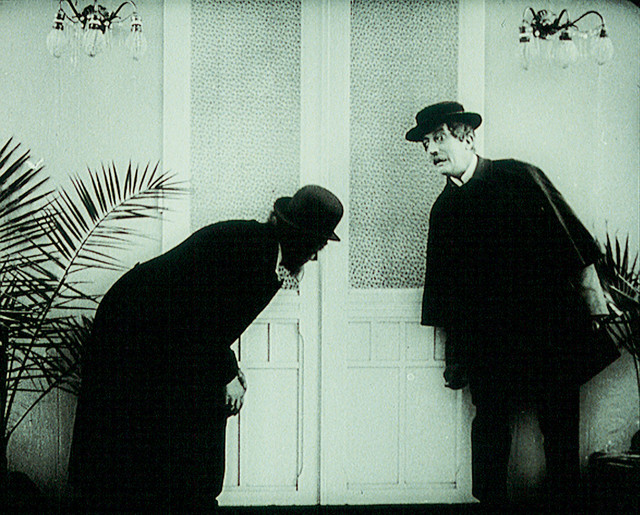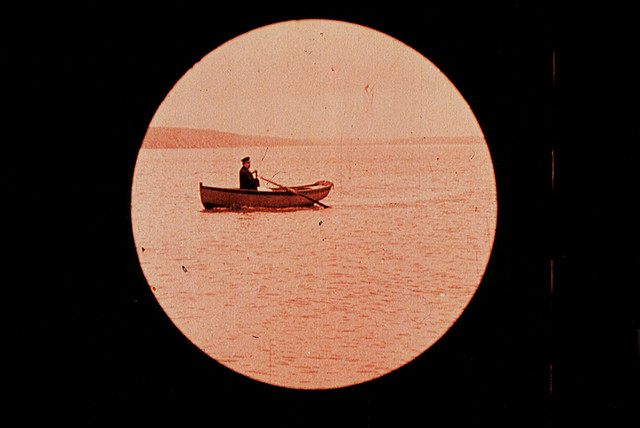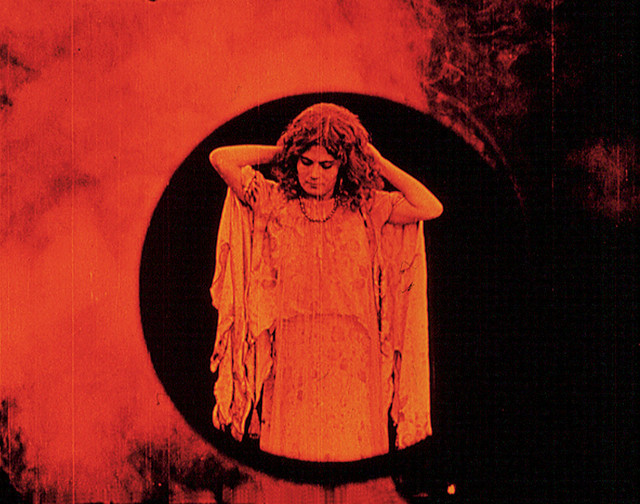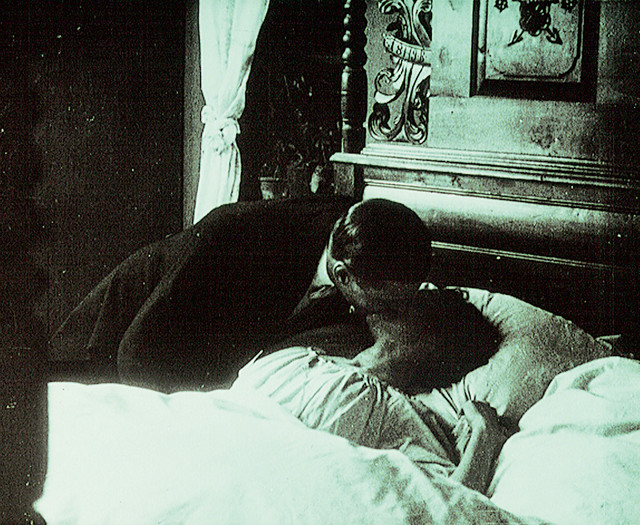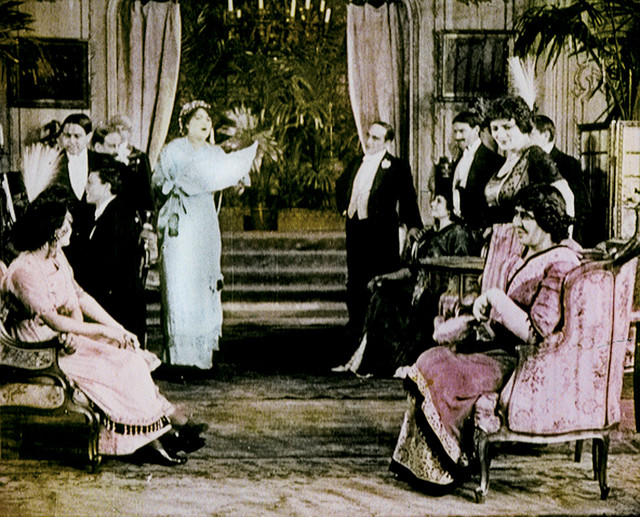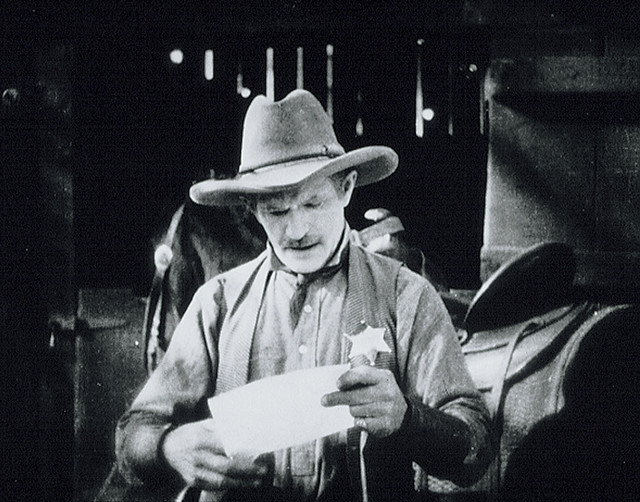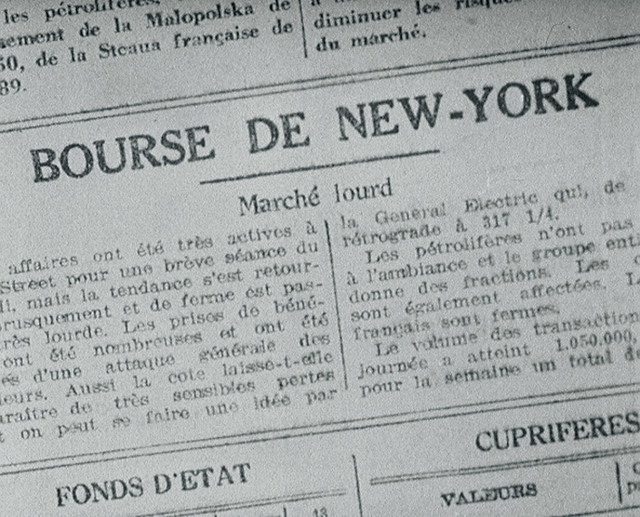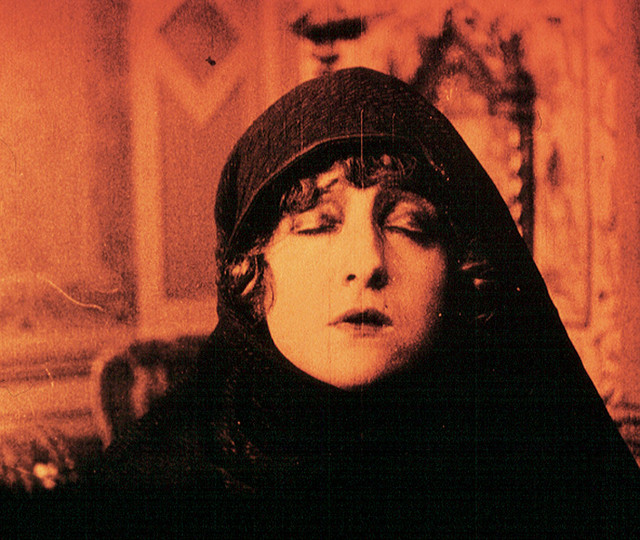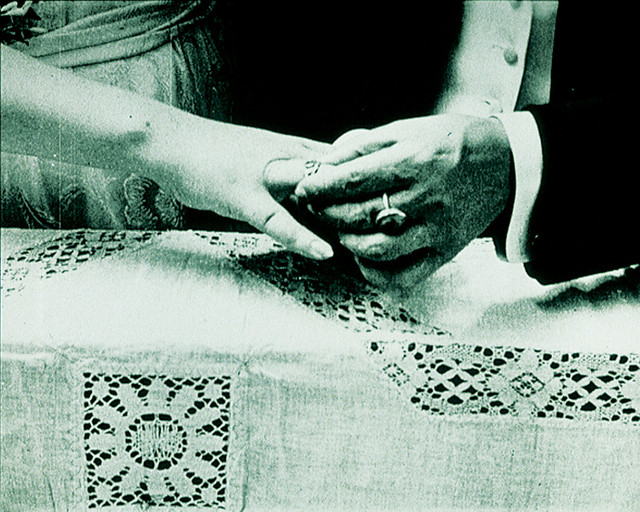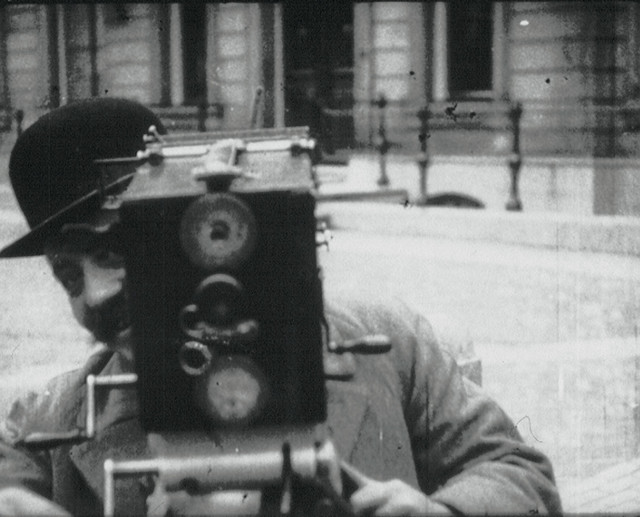Film ist. 7-12
7 comic
8 magic
9 conquest
10 writing and language
11 emotions and passions
12 remembering and document
While the first six sections of my tableau film, FILM IST, are primarily concerned with the scientific laboratory as the birth place of the medium, the six subsequent sections are dedicated to the variety theatre and the studio as the cradle of cinematography.
7
Comic
Before cinema got its own specially made spaces similar to the theatre, it was bound up with the world of 'attractions' and not just in a geographical sense. Often film shows were part of a variety show programme, and the choice of theme and subject reproduced variety acts. Transvesties and slapstick sketches were directed and filmed by early cinematographers in their 'sunshine' studios with the same actors who appeared in the variety shows prior to the films being shown.
When the camera was liberated from a fixed position and mounted on every kind of moving vehicle available at the time, it meant that the age of ‘action cinema’ had begun. Chases, collisions and accidents were amongst the favourite subjects of early detective stories.
Thrills like this together with breaking social taboos, especially in the sphere of sexuality or violence, served from the earliest days of cinema to satisfy viewer desire for pleasure and 'visual excitement'.
8
Magic
Early masters of film such as Georges Méliès often came from the milieu of showmen and magicians.
It was only logical therefore that they would be responsible for inventing all the tricks and reality alienations which only film techniques could produce – stop tricks, time lapse, superimpositions and reverse action in all manner of combinations.
Film replaced trapdoors, levers and invisible ropes. It was enough to stop the camera while the lady left the stage. The transformation, when someone or something became something else became the central theme of the majority of magic-films. Later the same tricks were built into normal plots and so became essential elements in early fantasy and horror films.
9
Conquest
However, influences did not just come from the world of Varieté and the comic theatre but also from 'attractions' designed to stimulate the pure ‘visual excitement' of visitors to fun fairs and shows – the panorama or panopticum.
Above all the appeal of the foreign, the exotic and the unknown were the grounds for exhibiting ‘anatomical wonders’, as well as members of other ethnicities in the so-called ‘Völkerschauen’.
Film offered the possibility of capturing these people in living pictures in their far-off countries and to experience these ‘first contacts’ at home and devoid of danger.
The conquest of the landscape by the world-wide spread of the railway, in combination with the film camera, enabled 'phantom rides' to be made through all the remote areas of the world. These far more spectacular and true-to-life moving panoramas, were responsible for the demise of the painted panorama. Even the favourite subject of these panoramas – the battle scene – was taken over by film. With the utilisation of film the First World War became the first media war in history.
10
Writing and Language
The roll of the showman who extolled the virtues of his ‘wonders’ to the funfair crowds was taken over by the film narrator. It was only with the introduction of film rental that it became necessary to integrate commentary into the film so that they could be understood on their own. The history of silent cinema is characterised by the many forms and experiments aimed at making the film stories understandable – text inserts, inscriptions in the pictures themselves, letters and telegrammes, newspaper cuttings, scrolls etc. These either take on the roll of the narrator as an integral part of the narrative structure or take on an independent narrative function.
It was certainly not to be taken as a matter of course that the spoken word, the dialogue of the silent film, only took place between the actors on screen. On the contrary. Often the protagonists talked directly to the audience and tried to convey what they meant with gestures and mime, similar to the gesture-language of audio-linguistically disadvantaged people.
11
Emotions and Passion
The body language, gestures and mimes of the actors in the early melodramas was similarly expressive, although in this case there was no direct eye contact with the audience any more. Intensification, exaggeration and symbolic representation of an inner state of mind was a challenge to the actor’s abilities of mimic expression and director’s capabilities.The Italian divas around 1910 attained such an emotional mastery in depicting passion that they can be considered the first real film stars.
The fates of these figures in the films not only demonstrate the attempt by women to achieve sexual freedom, they also show the social norms and their constraints. All of them either die or go insane.
12
Remembering and Document
Daily life, life in the city and in the country, traffic but also political and religious events were all film subjects from the very beginning. Film as a medium of preserving memory or documenting reality was as questionable then as it is now. Even the very first film ever to be shown in public – L’arivée d’une train en gare de la ciodat – is to be found in three different versions and thus is not a documentary of the event but a precisely constructed production. Countless reports of political parades and religious processions did not represent reality but were commissioned works for which the events were then enacted. Even when the scenes were documentary in nature, they could only be said to be a reflection of reality if the camera was hidden. The presence of the camera in public changed the behaviour of passers-by who reacted to it thus transforming the representation of daily life into a documentary about the making of the film itself.
Conversely, it was often the case that locations for the shooting of feature film scenes were besieged by curious spectators so that they entered the pictures, making a document from a fiction.
Tom Gunning, "Film ist. A primer for a visual world", in: Stadtkino Zeitung Nr.379, April 2002
Ken Eisner, "Film ist.(7-12), in Variety, 25.11.2002
Richard James Havis, "The first cut", in: The daily tiger, IFFR 2002
Buch, Regie, Schnitt
Gustav Deutsch
Recherche
Gustav Deutsch
Hanna Schimek
Musik
Werner Dafeldecker
Christian Fennesz
Martin Siewert
Burkhard Stangl
Produktion
loop media
Produzent
Manfred Neuwirth
Kooperation
Centre National de la Cinematographie
Cinemateca Portuguesa
Cineteca di Bologna
Filmarchiv Austria
Nederlands Filmmuseum
Vertrieb / Verleih
sixpackfilm
Nederlands Filmmuseum
Lightcone


